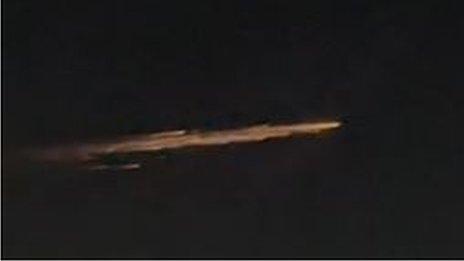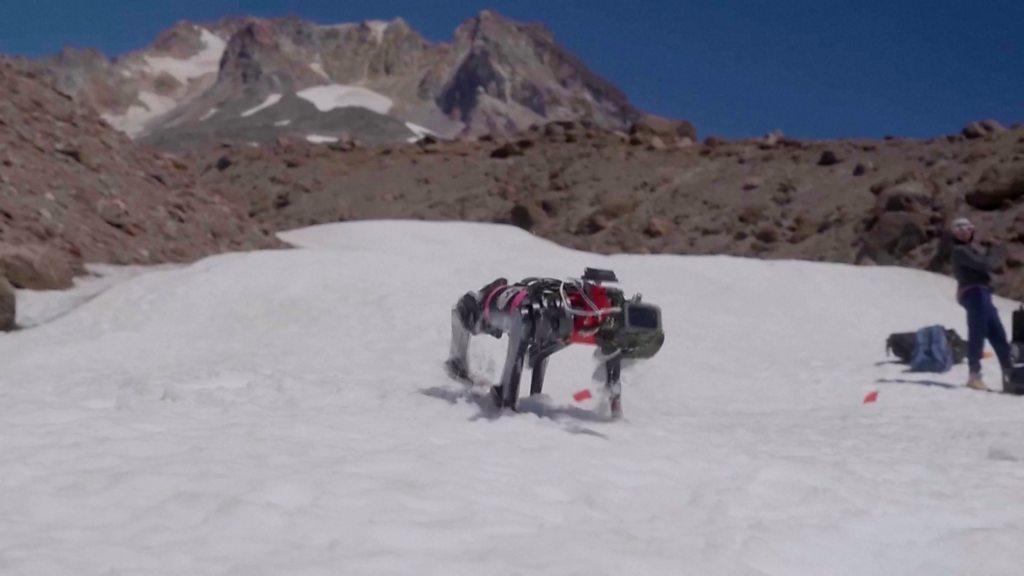Nasa says part of International Space Station crashed into Florida home
- Published
Watch: 'It almost hit my son' debris crashes through home in Florida
US space agency Nasa confirmed that an object that crashed into a home in Florida last month was part of the International Space Station (ISS).
The metal object was jettisoned from the orbiting outpost in March 2021, Nasa said on Monday after analysing the sample at the Kennedy Space Center.
The 1.6lb (0.7kg) metal object tore through two layers of ceiling after re-entering Earth's atmosphere.
Homeowner Alejandro Otero said his son was nearly injured by the impact.
Nasa said the object was part of some 5,800lbs of hardware that was dumped by the station after it had new lithium-ion batteries installed.
"The hardware was expected to fully burn up during entry through Earth's atmosphere on March 8, 2024. However, a piece of hardware survived and impacted a home in Naples, Florida," the agency said.
The debris was determined to be part of a stanchion used to mount batteries on a cargo pallet.
The object, made from metal alloy Inconel, has dimensions of 4in by 1.6in (10.1cm by 4cm).
Mr Otero told CBS affiliate Wink-TV, external that the device created a "tremendous sound" as it blasted into his home.
"It almost hit my son. He was two rooms over and heard it all," he said.
"I was shaking. I was completely in disbelief. What are the chances of something landing on my house with such force to cause so much damage," Mr Otero continued.
"I'm super grateful that nobody got hurt."
According to Nasa, the ISS will "perform a detailed investigation" on how the debris survived burn-up.
Space junk has been a growing a problem. Earlier this month, sky watchers in California watched mysterious golden streaks moving through the night sky.
US officials later determined that the light show was caused by burning debris from a Chinese rocket re-entering earth's orbit.
In February, a Chinese satellite known as "Object K" burned up as it re-entered the atmosphere over Hawaii.
Last year, a barnacle-covered giant metal dome found on a Western Australian beach was identified as a component of an Indian rocket. There are plans to display it alongside chunks of Nasa's Skylab, which crashed in Australia in 1979.
Object thought to be a satellite burns up on re-entering Earth's atmosphere
Related topics
- Published3 April 2024

- Published12 April 2024
